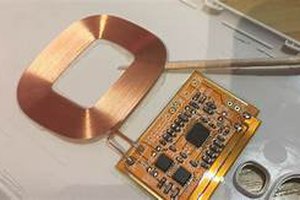Some basic requirements and functions:
- Ultra low power
- Small footprint to fit in existing devices
- Minimal amount of components->use a SOC with everything needed built in
- Beacon functions to know where the device is located
- Prepared for mesh networks for multiple devices
- Able to detect the difference between static, low battery warning and alarm power usage.
- Wakeup on alarm to save power but still react to alarms
- Notify user that battery change is needed when the voltage drops to low
- more to come
Extra:
- Battery usage statistic and low battery warning systems for big IoT networks
- Other user case where power consumption can be used as a sensor
Why Bluetooth?
To get IoT devices out on the Internet a low power protocol to WiFi/Cable converter is needed. 802.15.4 based protocols or 433MHz protocols are often used but not a lot of people has the converter at home. But almost everyone has a newer phone with BLE capability. Therefore the use of Bluetooth can simplify the connection to the world by using already available phones.
Other connected alarms:
There is a lot of mesh connected fire alarms on the market where the main function is to sound the alarm on all units in case of fire. Some of them can also be connected to home automation for more functionality. But the problem with those is that they requires more devices to be bought to enable more functions. Also there are often a higher price attached to those products compared to simple fire alarms.
The aim with this device is to connect existing fire alarms and add more functionality at a low price.
Status right now:
Ordered a TI CC2650 Launchpad for the prototyping.
Reading up on Eddystone Beacon, I think I will implement it as a connected Eddystone beacon https://en.wikipedia.org/wiki/Eddystone_(Google), http://processors.wiki.ti.com/index.php/CC2640_Eddystone_Beacon_Implementation
Project plan:
- Phase 1: Setting up a beacon with voltage, current, temperature and place information
- Phase 2: Make some simple measurement on a fire alarm to get the characteristics of the power consumption.
- Phase 2.5: Make a Android app to react(alarm and SMS/other service(Twitter?)) to an alarm based on the previous information (alarm, low battery warning).
- Phase 3: Make a Settings app for changing things like the place of the beacon.
- Phase 4: Find a smaller battery and make the first hardware design
- Phase 5: Repeat to improve
- Phase X: Add mesh/repeater functions, test different types of alarm makers, characteristic the power consumption to optimize the lifetime of the device, find other user cases like intrusion alarm, clocks and so on, add more to the battery log functions, add auto buy new battery.



 Gabor Futo
Gabor Futo
 Kumar, Abhishek
Kumar, Abhishek
 JP Gleyzes
JP Gleyzes
Just found this http://www.getroost.com/. A WiFi 9V fire alarm battery. I'm happy that others have a similar idea. If you want this today, go ahead and buy one. I will probably will get one to compare the performance when this project nears the finish line.
PS. I got the idea before finding the roost. I still thinks there is a use for Bluetooth alarms so I will continue with this project. :)